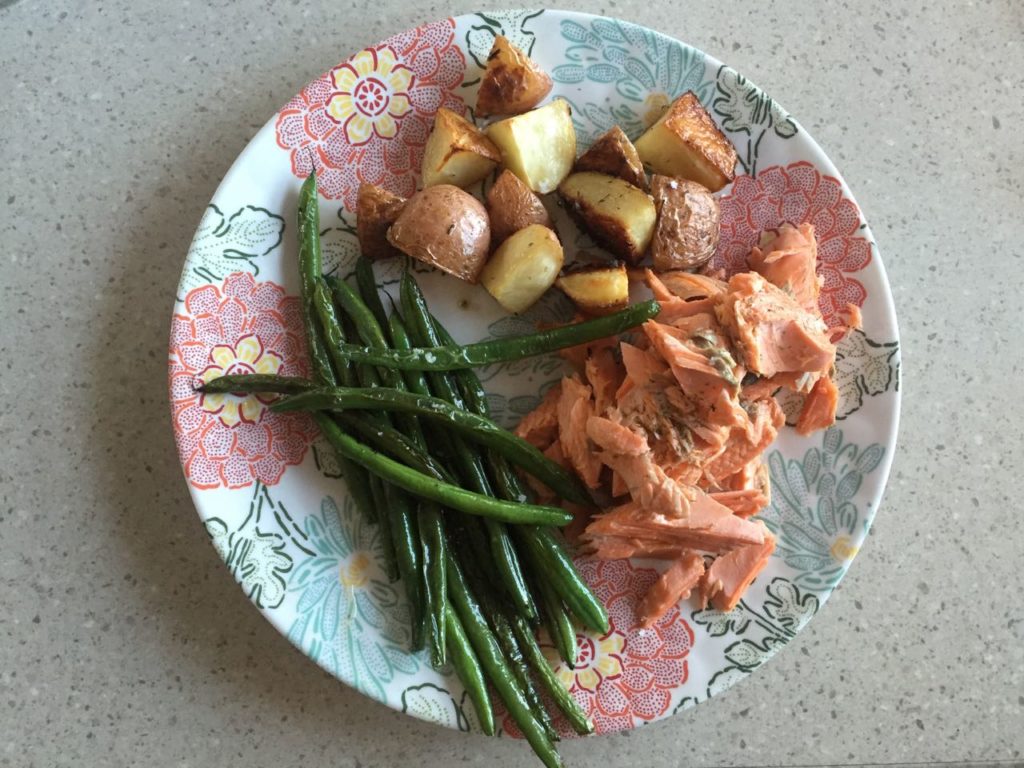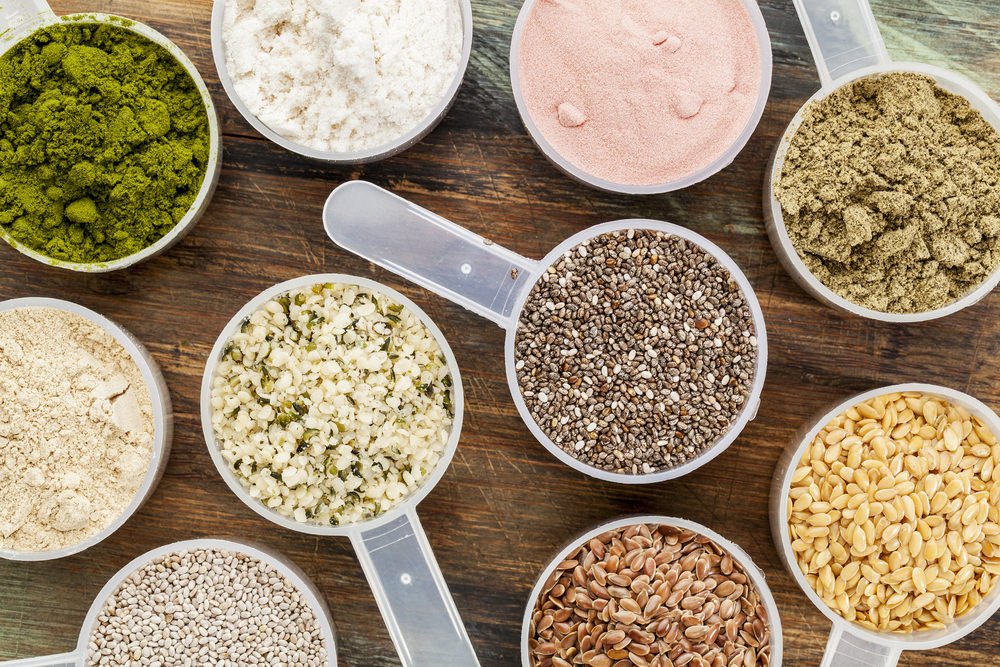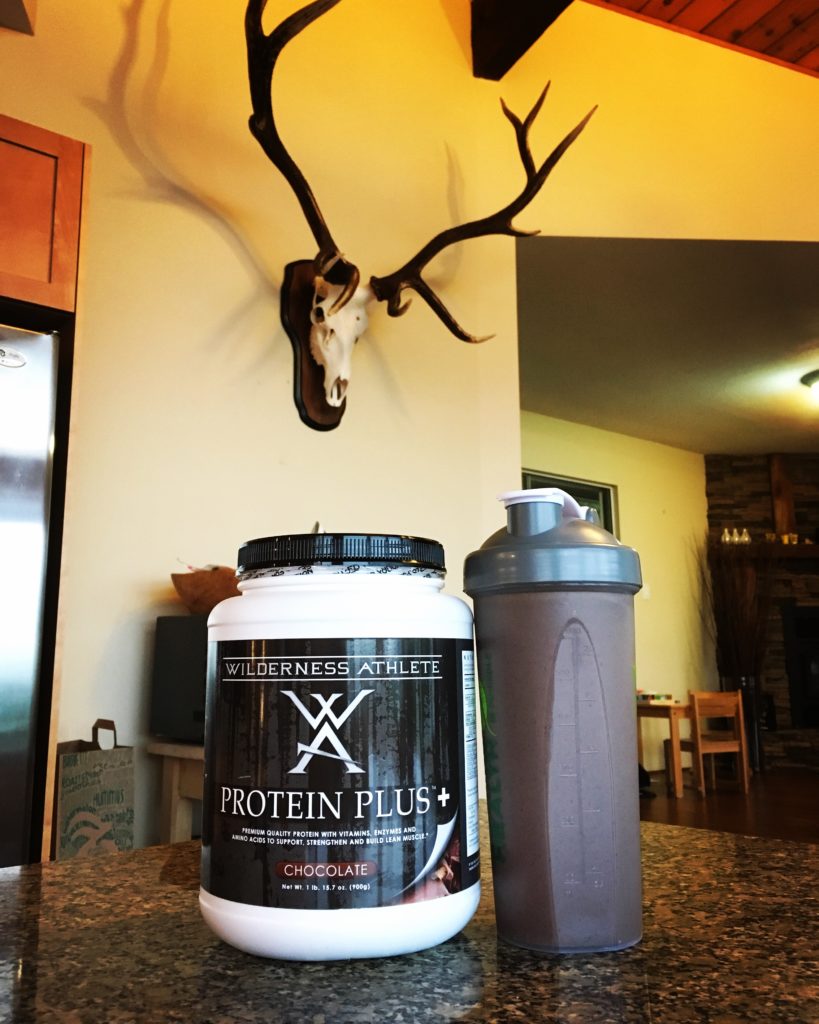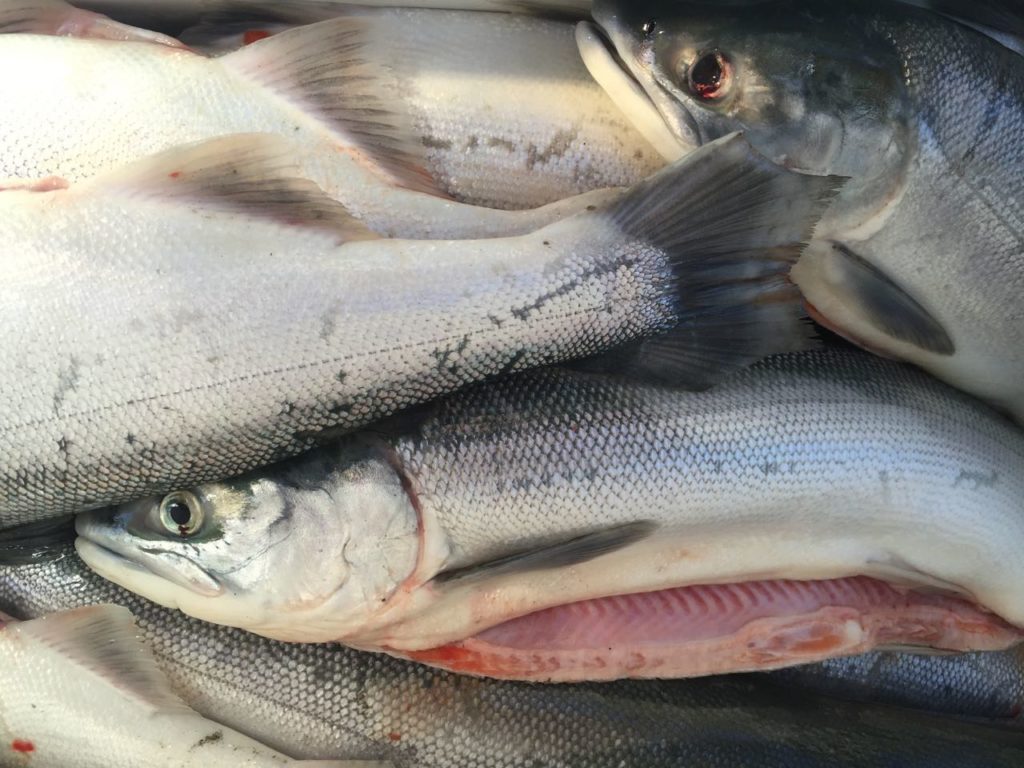While a lot of folks are concerned about dropping pounds, some of us might actually want to put on some weight; preferably lean muscle mass. Gaining weight (the kind you want) can be challenging. You can always go on the “see food, eat food” diet and see how well that works for you. However, a well-balanced nutrition approach is a better bet for putting on muscle while minimizing the amount of fat gained during a building phase.
If you are thinking that your frame could use a bit more strength and mass to be better adapted at hauling around weight, here is a handy three-step guide to determining your goal, caloric intake, and macronutrient breakdown for such an endeavor. Good luck and happy eating!
Step One: Determine Your Goal
The first things to determine are your primary goal, as well as your “why?” Are you trying to get stronger? What for? Do you want to be bigger for aesthetics? Is size the priority, or is it pure strength? Determine your specific and measurable goals for undertaking this program. Example: I want to gain five pounds of lean mass in five weeks in order to put ten pounds on my back squat.
Step Two: Determine Caloric Need
We have two ways to do this. Log your current intake for a week and see where you average out. It may surprise you to find out you’re only eating 2000 calories a day, no wonder you aren’t gaining weight!
From here, we can either slowly trickle in more calories or whack you with way more food.
Option 1:
The slow trickle of adding 250 calories per week to your maintenance level will give your digestion a chance to adapt to the excess calories. However, the weight gain could be painfully slow. By gradually increasing your calories, your metabolism is likely to up regulate with it, and you may find no weight gain at all.
Option 2:
Go big! Take your current bodyweight in pounds and multiply this number by 20 to get how many calories you need per day. For example, if you weigh 185 pounds, 185 multiplied by 20 equates to 3700 calories per day. That likely seems like a lot, but this still may not be enough for you to create a caloric surplus. If this is the case, we can always add more.
Pick one of these two options and determine your calorie goal. Yes, you will need to count calories for a bit to make sure you are on point.

Step Three: Determine Your Macros
Macronutrients are protein, carbohydrates and fat. Let’s discuss each one of these individually:
Protein
You will need one to 1.5 grams of protein per pound of bodyweight, per day, in order to gain lean muscle mass. Proteins (also known as amino acids) are the building blocks of muscle tissue, so you will need a lot of these every single day. Looking at our 185-lb example, his daily protein intake needs to be between 185 and 270 grams per day. Why not way more than this? Why not just eat protein? If you get all of your calories from protein (which would be extremely hard to stomach), your body is going to have to convert some of that protein into sugar to fuel your training, through a process called gluconeogenesis. This is not ideal. Protein also has a high thermic affect (about 25% of the calories you eat from protein get wasted in digesting and assimilating), so trying to get all your calories from protein is not a smart idea. Instead, we want to also eat carbohydrates to fuel our training. Find your target protein intake in ounces by taking your bodyweight and dividing this number by 4.5-7. For our example, a 185-lb athlete should eat 26 to 42 ounces of protein per day. That’s a lot of food.
The best sources of protein are meat, fish, eggs and supplemental whey taken around training periods. Whole food proteins contain all of the essential amino acids, where as plant proteins do not. Animal proteins are also more biologically available; meaning more of the protein gets used and assimilated by the body. Here is what a typical day of protein intake could look like for our 185-lb athlete:
Pre-workout breakfast: 4 eggs + 2 ounces sausage
Post-workout: 2 scoops whey protein isolate
Lunch (eaten within one hour of post-workout meal): 8 ounces grass-fed ground beef
Second lunch: 8 ounces of grilled chicken breast
Dinner: 8 ounce grass-fed ribeye
This put us at 38 ounces of protein, which falls in our 26 to 42 ounce range.
Make a list of protein sources you like to eat. Chicken thighs are easier to eat than dry, unseasoned, unsalted chicken breast. Ribeye likely goes down easier than rump roast. Save protein powders for immediately post-workout. If you are intolerant of whey, go for egg-white protein.
Calories: Every 300 grams of protein will give us about 1200 calories
Carbohydrates
Carbohydrates are the preferred fuel source for high intensity activity. Carbohydrates also create an insulin response in the body, which is highly anabolic (growth inducing). Your carbohydrate needs likely match your protein intake. For our 185-lb athlete, he needs 185 to 300 grams of carbohydrates per day in order to grow. If you are coming from a low carb Paleo background, this likely sounds alarming. WARNING: If you are not already fit and lean, do not undertake this mass gain program. This is for insulin sensitive individuals who are ready to pack on some lean muscle mass, and may in the process gain a smidge of fat weight (think of it as more mass to put behind the bar).
The best sources of carbohydrates are going to be starches. Foods to focus on will be yams, potatoes (yes, white ones too), sweet potatoes, white rice, bananas, hard winter squashes, etc. If you tolerate corn, this can be an option as well. For our 185-lb athlete, let’s see what a day of carbs could look like:
Breakfast: 1 cup well cooked sweet potatoes and 1 banana
Post-workout: 16 ounces of orange juice or coconut water
First lunch: 1 cup cooked white potatoes or rice
Second lunch: 1 cup butternut squash and an apple
Dinner: 1 cup roasted rosemary potatoes and 1 cup cherries for dessert
This puts us at 300 grams of carbohydrates from whole food sources.
The carbohydrates you get from non-starchy vegetables such as greens, onions, mushrooms, etc. do not count towards your daily carbohydrates. It is best to load most of your carbohydrates immediately pre- and post-workout. Notice the only time we have liquid carbs is immediately following training. If you train first thing in the morning, the carbohydrates with dinner at night are non-negotiable.
Calories: 300 grams of carbohydrates will give us 1200 calories.

Fat
Fat is basically our elective macronutrient to help us round up the calories. As you can see with our 185-lb example athlete, we are up to 2400 calories from carbohydrates and protein. To make it to our calorie goal of 3700, we need about 1300 calories worth of fat, or 145 grams. The easiest way to do this is to choose fatty cuts of meat: eat wild-caught fish such as sardines and salmon; cook your food in good quality fats; stock up on avocados. The best fats to choose from will be coconut products (oil, butter, flakes, full-fat canned coconut milk), avocado (and guacamole), olive oil and olives, animal fats from pasture-raised animals (duck fat, lard, tallow), pastured butter and ghee (Kerry Gold butter for example), and nuts in limited quantities. Nuts are high in phytic acid, high in pro-inflammatory omega-6 fats, and likely roasted in vegetable oils. They are not ideal, but an ounce or two of nuts per day will not do you harm and may be an easy way to sneak in extra calories. Pick roasted and salted nuts, or, even better, soaked and sprouted (this goes for nut butters, too).
Here is what a typical day of 1300 calories worth of fat would look like:
Breakfast: 1 tablespoon coconut oil
Post-workout: none
First lunch: 1 avocado
Second lunch: 2 tablespoons almond butter
Dinner: 2 tablespoons compound butter
This is an example of the fats I would add to meals, considering that I am eating fatty sources of protein such as pasture raised eggs, pastured bacon, grass-fed rib eye, wild caught fish, chicken thighs, etc.
Special Considerations
Here are a few more points to consider when putting together your mass gain protocol:
Pre-workout Nutrition
You want to have some protein and carbs before training. A little fat won’t hurt anything. Branched-chain amino acids (BCAA’s) are a great option as well.
Post-workout Nutrition
Carbs and protein with at least a 2:1 ratio is a great idea. Get in 30 + grams of protein and 50+ grams of carbs from starch. You can do this with a whey shake and roasted sweet potatoes. The more well-cooked the starch, the faster it is digested. Peel your yams and sweet potatoes.

Sleep
Eight to ten hours per night in a pitch black room is non-negotiable. If you are not sleeping, you’re neither recovering nor getting a growth hormone release. Make sleep a top priority. Naps are encouraged. Black out your room with tin foil, put tape over the fire alarm, get rid of all your electronics, make it cool (about 68 degrees) and limit electronic use in the two hours before bed.
Caffeine
You don’t want to hear this, but caffeine can be detrimental to your plan. Taking in a small amount (approximately four ounces) pre-workout can give you a little boost. More and you are dipping into your central nervous system and generating unnecessary stress. Do as Robb Wolf says, “Only drink coffee when you don’t need it.” If you are abusing caffeine as a way to get through your days, you are constantly eliciting a stress response in the body. This can overtax your adrenal glands and be catabolic.
Testosterone
If you have lagging testosterone levels, you are likely not going to see benefit from this plan. How do you know your testosterone status? Do you wake up with morning wood? Do you have a high sex drive? Do you have energy to train? Have you been seeing gains in the gym? Stress, lack of sexual stimulus, excess fat weight, too much estrogen, poor diet and lack of sleep can all negatively impact your testosterone levels. Rather than supplementing, take care of the lifestyle factors that impact your hormonal status. Get some sleep, regulate your stress, have sex, fool around, don’t overtrain, eat really well, and get some sunlight.
Supplementation
To help with recovery from training, you can consider including fish oil, whey protein, BCAA’s, probiotics and magnesium.
Fish Oil
Five grams of fish oil per day is great, but you should also be making a point to eat wild-caught fish three to five times per week. Eating grass-fed beef, pastured animals and omega-3-enriched eggs can also help. Make sure to take fish oil with a meal.

Whey
Whey protein isolate can be a great option after your training sessions. Find a brand that you like the taste of — this will determine whether or not you actually drink it. Wilderness Athlete, Stronger Faster Healthier, Progenex, and Tera’s whey are all great options. It is best not to rely on liquid proteins outside of pre- and post-workout.
BCAA’s
BCAA’s should be taken fifteen minutes before training, as well as immediately following a hard training session. ATP and MusclePharm make good ones. Mix these with water and take five to ten grams before or during training.
Probiotics
Probiotics can help you digest all this damned food you have to eat. If you tolerate dairy, full fat grass-fed yogurt or cottage cheese can introduce some beneficial bacteria. Fermented foods like kombucha, kimchi and sauerkraut are also great to include in your diet.
Magnesium
Natural Calm is a calcium magnesium supplement that you can take before bed. Magnesium helps your muscles to relax and works wonders for folks dealing with muscle cramping. Follow the instructions on the label, if you take too much of it, you can get the shits. A couple of teaspoons mixed in water can knock you out at bed time.
Recovery
You need to be proactive with your recovery. There will be days that you are not training, but you can still be treating yourself like an athlete. Ice baths, epsom salt baths, massage, foam rolling, and mobility are all critical to maximizing your recovery. Find a routine that works for you. Nothing helps me recover quite like an epsom salt bath at night, followed by some Natural Calm magnesium, good food, and ten hours of sleep. Make a plan and commit to it.
Hydration
An easy way to stay hydrated is to get full-on meat head and drink a gallon of water per day. Fill a jug and make sure it is done. Drink 16+ ounces of water immediately upon waking, sip water throughout your training, take in a bunch of water after your workout, and keep water handy. Sparkling water such as La Croix, Pellegrino, and Perrier can make it easier to drink. If you have coffee, drink an equal amount of water once you’re done with your cup.
Stress
Stress is great for us in small doses. The stress of training is an awesome stimulus, so long as we are recovering from it. Doing highly intense exercise followed by a shit-ton of psychological stress is antagonistic to your goals, because stress can be catabolic. If your body thinks it’s always in fight or flight mode, or constantly being chased by a lion, you will likely not see muscle gains. Did I already mention how stress lowers testosterone levels as well? Identify what stresses you out and take responsibility for it. Are you in a bad relationship? Get out of it! Do you hate your job? Find a new one! Also, find effective stress-management practices such as journaling, reading novels, spending more time with your good friends, etc.
Season
Undertaking a mass gain in the spring/summer can prove to be tough. Our body naturally wants to shed winter weight and be more active due to increased daylight hours. Doing a mass gain in the fall and winter, when your body naturally wants to put on weight, is ideal.
Conclusion
I hope this helps you put together a well-rounded nutrition plan to complement your training program. I know the MTNSTRONG crew can help you with a progressive training schedule to truly reap the benefits of this mass-gaining plan. If you’re a smaller framed mountain athlete, adding some lean muscle mass can increase your tolerance to heavy loads, especially over long duration hunts, and help you take your training to the next level in the gym.
If you’ve been reading the Mountain Fitness column regularly you’ll know that the JOMH/MTNSTRONG boys put a lot of emphasis on power to weight ratio. Well remember, this is a ratio so combined with the right training, adding a bit of weight is going to increase your mountain ready power. Get after it.
About the Author:
Heather Kelly is the creator of Heather’s Choice Meals for Adventuring. Inspired by her personal backcountry trips, Heather strives to create healthy, delicious meals and snacks for folks headed out on epic adventures. You can order her meals and snacks online at heatherschoice.com and use the coupon code JOMH to save 10% off your next order.
Opt in for her newsletter to hear when her new ebook Who’s Ready For An Adventure?! is released later this spring!

